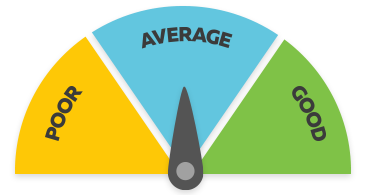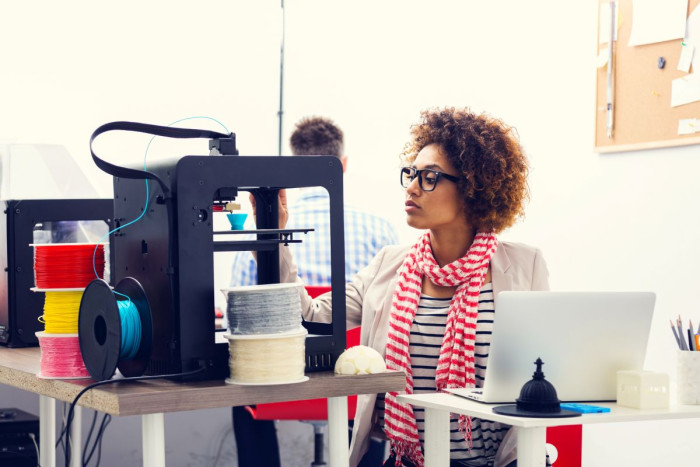Industrial Designer
Kaitātai Ahumahi
Alternative titles for this job
Industrial designers design and develop innovative products for use in homes, businesses and industry.
Pay
Industrial designers usually earn
$60K-$75K per year
Senior industrial designers can earn
$90K-$120K per year
Source: Seek, 2023
Job opportunities
Pay
Pay for industrial designers varies depending on experience.
- Industrial designers usually earn between $60,000 and $75,000 a year.
- With experience they can earn between $75,000 and $90,000.
- With more experience and responsibilities, industrial designers can earn $90,000 to $120,000.
Self-employed industrial designers may earn more than this, but this depends on the success of their business.
Source: careers.govt.nz and Seek, 2023
(This information is a guide only. Find out more about the sources of our pay information)
What you will do
Industrial designers may do some or all of the following:
- analyse clients' requirements
- generate ideas for new products
- prepare drawings and models
- trial prototypes (models) to test design progress
- develop concept designs through to detailed production designs
- discuss design ideas with clients
- work out material and process requirements
- provide clients with budgets for production of designs
- analyse product patent documents
- test the durability, efficiency, or comfort of products (ergonomics).
Skills and knowledge
Industrial designers need to have knowledge of:
- design and production standards
- manufacturing materials and processes
- ergonomic and human factors design (how to design for users' comfort and efficiency)
- how to interpret and visualise ideas in two and three dimensions (2D and 3D)
- how to operate digital design tools and equipment.
Working conditions
Industrial designers:
- usually work regular business hours, but may work evenings and weekends to meet deadlines
- work in offices, workshops or studios
- may travel locally, nationally or internationally to work with clients.
What's the job really like?
Josh Bruderer
Industrial Designer
Showcase your skills at university
Industrial designer Josh Bruderer says if you want a job in product design, it’s important to work on projects that show your range of skills while at university.
"Get the hands-on experience and show employers you’re able to make things that users and the market need."
Internship a foot in the door to full-time work
Josh successfully applied for an internship at Formway three months before finishing his studies.
Now a designer at Formway Design, he specialises in ergonomic seating (seating designed for efficiency and comfort). "I've always been interested in designing things – especially furniture and lighting – and now I'm working in this niche area creating chairs for manufacture overseas."
Translating ideas into practical products takes team work
"I’m a visual person so I enjoy the conceptual phase of the work – it’s the part where you can be the most creative. But the best thing is knowing there’s a practical output for your creativity."
Moving from an idea to a product takes real team work, says Josh. "Designers and engineers bounce ideas off each other to get the best possible outcome."
Staying in touch with current design trends important
To ensure the company keeps producing designs that are winners, Josh says it’s important to keep up with the latest trends, like using recyclable materials.
"I look forward to getting the chance one day to go to the overseas furniture fairs, or being immersed in Europe’s rich design culture."
Entry requirements
To become an industrial designer you need a Bachelor's degree in industrial or product design. Some employers accept people with degrees in related areas such as graphic or architectural design.
You also need a portfolio that demonstrates your design and creative ability.
Secondary education
A tertiary entrance qualification is required to enter further training. Useful subjects include design and visual communication (graphics), maths, construction and mechanical technologies, English, art and computer studies.
Personal requirements
Industrial designers need to be:
- creative and imaginative with good artistic skills
- innovative
- able to work well under pressure
- motivated and confident
- able to accept criticism
- good communicators
- persuasive, as they need to sell their ideas and designs to clients.
You work with a team of designers and engineers and bounce ideas off each other. You need to be able to communicate your ideas in a way other people can understand.
Josh Bruderer
Industrial Designer
Useful experience
Useful experience for industrial designers includes:
- visualisation or illustration experience
- computer-assisted design (CAD) experience
- digital fabrication (computer-aided design and manufacture of products using 3D printing or machining)
- model making
- architecture or interior design work
- craft or furniture design
- manufacturing work in a workshop
- running a business.
Find out more about training
- Designers Institute of New Zealand (DINZ)
- (09) 529 1713 - designer@dinz.org.nz - www.dinz.org.nz
What are the chances of getting a job?
Opportunities for industrial designers growing slowly
Demand for industrial designers is gradually increasing because more businesses are designing innovative products and services.
Despite the increase of in-house product design among small-to-medium businesses and manufacturers, industrial design is still a relatively small occupation.
In addition, competition for industrial designer roles is high.
According to the Census, 1,740 industrial designers worked in New Zealand in 2018.
Industrial design graduates may work in related roles
Industrial and product design graduates can work in a range of related roles such as:
- design researcher
- strategic designer
- experience designer.
These jobs use skills such as interaction design and service design – looking at how users interact with products or services, and making design improvements.
How to increase chances of getting industrial design work
You can increase your chances of getting into industrial design by:
- being connected to a professional organisation like The Designers Institute of New Zealand, where you can network and find a mentor
- approaching industrial design companies you’re interested in and asking if you can do an internship during the holidays, which can lead to full-time work
- entering competitions like the student category of The Designers Institute of New Zealand’s annual Best Design Awards, which can raise your profile.
Types of employers varied
Many industrial designers work for:
- large manufacturing companies
- design or engineering consultancies
- architectural practices.
Some industrial designers are self-employed.
Sources
- Adank, R, associate professor industrial design, College of Creative Design, Massey University, careers.govt.nz interview, August 2018.
- Ministry of Business, Innovation and Employment, 'Innovative Partnerships', accessed August 2018, (www.mbie.govt.nz).
- Stats NZ, '2018 Census Data', 2019.
- Veninga, C, chief executive officer, The Designers Institute, careers.govt.nz interview, August 2018.
(This information is a guide only. Find out more about the sources of our job opportunities information)
Progression and specialisations
Industrial designers progress by developing more advanced skills in their area of professional practice, and may move into managerial roles.
Industrial designers may specialise in:
- home appliances, lighting and furniture design
- transport design
- equipment design including medical, agricultural, electronic and recreational equipment
- marine or aircraft interiors
- film production, and stage and tourism design
- retail space design
- service design
- game design
- ergonomic and human factors design (designing services or products that are safe, comfortable, and encourage productivity)
- interaction design (design based on studying how users interact with products or services).
Last updated 28 March 2025


